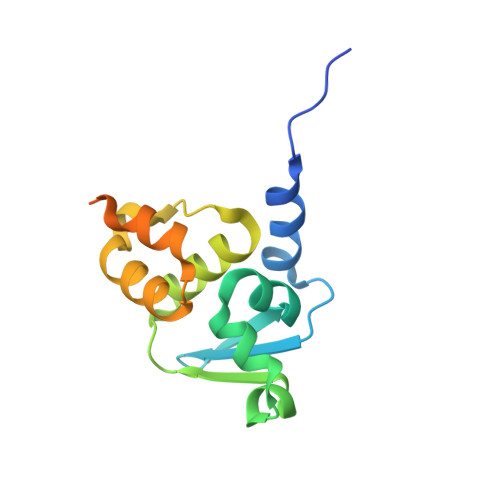Adaptor protein self-assembly drives the control of a cullin-RING ubiquitin ligase.
Errington, W.J., Khan, M.Q., Bueler, S.A., Rubinstein, J.L., Chakrabartty, A., Prive, G.G.(2012) Structure 20: 1141-1153
- PubMed: 22632832
- DOI: https://doi.org/10.1016/j.str.2012.04.009
- Primary Citation of Related Structures:
4EOZ - PubMed Abstract:
The E3 ligases recruit substrate proteins for targeted ubiquitylation. Recent insights into the mechanisms of ubiquitylation demonstrate that E3 ligases can possess active regulatory properties beyond those of a simple assembly scaffold. Here, we describe the dimeric structure of the E3 ligase adaptor protein SPOP (speckle-type POZ protein) in complex with the N-terminal domain of Cul3 at 2.4 Å resolution. We find that SPOP forms large oligomers that can form heteromeric species with the closely related paralog SPOPL. In combination, SPOP and SPOPL (SPOP-like) form a molecular rheostat that can fine-tune E3 ubiquitin ligase activity by affecting the oligomeric state of the E3 complex. We propose that adaptor protein self-assembly provides a graded level of regulation of the SPOP/Cul3 E3 ligase toward its multiple protein substrates.
- Department of Biochemistry, University of Toronto, 1 Kings College Circle, Toronto, Ontario M5S 1A8, Canada.
Organizational Affiliation:


















